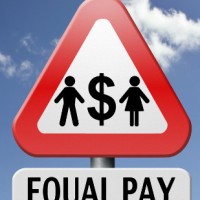Research: More women than men live in poverty
- Details
- Published on Monday, 13 April 2015 14:41
- Written by PRNewswire
More women than men live in poverty throughout the country and far fewer own a business, according to new research released last week.
In advance of Equal Pay Day on April 14, the Institute for Women's Policy Research (IWPR) released a report showing that women have higher rates of poverty, and much lower rates of business ownership than men in all 50 states, including the District of Columbia, despite having made significant progress over the last 25 years in attaining a college education.
This trend is especially pronounced among the youngest workers. Millennial women are considerably more likely than their male counterparts to have a bachelor's degree or higher (36.3 percent, compared with only 28.3 percent of Millennial men), yet Millennial women have lower earnings than men in all but one state, and higher rates of poverty than Millennial men in every state in the nation.
In this second release from IWPR's Status of Women in the States: 2015 series, IWPR analyzed four indicators to create the Poverty & Opportunity Composite Index: educational attainment, business ownership, poverty, and access to health insurance coverage. IWPR then ranked and graded every state based on their composite scores in these areas. Overall, the status of women with respect to poverty and opportunity has worsened in the majority of states (29) in the last decade. In 21 states and theDistrict of Columbia, women's status in these areas has improved.
"Despite their significant educational progress, women remain more economically vulnerable than men and this is especially true for Millennials, who represent the future of our labor market and economy," said Heidi Hartmann, PhD., president of IWPR and a MacArthur Fellow. "The inequality between women's and men's wages and their differential poverty rates, at all ages and educational levels, is a significant part of the income inequality story that is not being told."
In general, women in Northeastern states have more access to opportunity than women in the South. Four states in the Northeast—Connecticut, Massachusetts, New Hampshire, and Vermont, rank in the top 10 on the Poverty & Opportunity Index, while six Southern states—Alabama, Arkansas, Kentucky, Louisiana, Mississippi, Tennessee, and West Virginia—are in the bottom 10. The District of Columbia has the highest rates of women's educational attainment in the country, with over half of women aged 25 and older holding a bachelor's degree or higher, the highest share of women-owned businesses, and one of the highest rates of health insurance coverage, yet also has one of highest rates of women living in poverty, reflecting the large degree of inequality in the jurisdiction.
Across the United States, 15.5 percent of women live in poverty, compared with 11.9 percent of men. Native American (28.1 percent), Black (25.7 percent), and Hispanic (24.0 percent) women are all more than twice as likely to live in poverty as white women (11.7 percent). If all working women received equal pay with men, who are of the same age, have the same level of education, work the same number of hours, and have the same urban/rural status, the report notes that the poverty rate for working women in the United States would be cut by more than half, declining from 8.1 percent to 3.9 percent.
Today, women are slightly more likely than men to hold bachelor's degrees (29.7 percent of women aged 25 and older held bachelors' degrees in 2013, compared with 29.5 percent of men of the same age), but women's educational access is not distributed equally across racial and ethnic groups or by region. Only one in six Hispanic and Native American women hold a bachelor's degree, compared with nearly half of Asian/Pacific Islander women and one in three white women. One in three Hispanic women has less than a high school diploma, which is more than four times the share of white women without a high school diploma. In the states, only about one in five women aged 25 and older in West Virginia (19.1 percent), Arkansas (20.7 percent), and Mississippi (21.6 percent) have a college education, compared with women in the District of Columbia (53.5 percent of women aged 25 and older hold a bachelor's degree or higher), Massachusetts(40.3 percent), and Maryland (38.1 percent).
"The persistent wage gap, even for women with bachelor's degrees, in addition to high female poverty rates, and lack of educational access for Hispanic, Black, and Native American women, all point to the need for gender- and race-sensitive approaches to addressing income inequality," said Barbara Gault, Ph.D., vice president and executive director of IWPR.
The report finds that women in the United States own a much smaller share of businesses than men. The proportion of women-owned businesses inthe United Statesincreased marginally from 26.0 percent to 28.8 percent between 1997 and 2007, the most recent year for which federal data is available. In addition to the District of Columbia (where 34.5 percent of businesses are owned by women), states with the highest rates of women-owned businesses includeMaryland (32.6 percent), New York (31.7 percent), Hawaii (31.0 percent), and Georgia (30.9 percent). In addition to Arkansas (where 24.5 percent of businesses are owned by women), the other four states in the bottom five for women's business ownership are in the Mountain West: South Dakota (22.1 percent), Idaho (23.5 percent), Montana (24.6 percent), and North Dakota (24.7 percent).
In analyzing access to health insurance, the report finds substantial increases in women's health insurance coverage following the implementation of the Affordable Care Act (ACA). Between 2008 and 2014, the percentage of women aged 18 to 24 without health insurance decreased by more than a third, from 24.9 to 15.9 percent. Uninsured rates for women of all ages dropped 18.5 percent between 2008 and 2014, from 13.0 percent of women lacking insurance in 2008, to 10.6 percent in the first nine months of 2014. Data on health insurance coverage by race/ethnicity and state following full implementation of the ACA are not available, but previous data showed that Hispanic, non-union women were particularly unlikely to have access to health insurance in 2013, before the exchanges provided access, with less than half of this population receiving coverage. Of the 10 states ranked lowest for women's access to health insurance in 2013, only three states—Arkansas, Nevada, and New Mexico—have opted to expand Medicaid under the ACA.
Poverty rates also vary considerably depending on whether women (and men) have children. Single mothers have the highest rates of poverty in every state, compared with married men and women, single men and women without children, and single fathers. Nationally, 43.1 percent of households headed by single mothers are living in poverty. That is nearly twice the poverty rate of households headed by single fathers (23.6 percent in poverty), and nearly three times the rate of poverty of single women without children (15.0 percent). If working single mothers in the United States received equal pay, the very high poverty rate for families with a working single mother would be cut nearly in half, from 28.7 percent to 15 percent.
More data on poverty and opportunity among millennial women, older women, immigrant women and women living with same-sex partners, along with detailed breakdowns by race and ethnicity, are available at www.statusofwomendata.org.
This is the second in a series of seven releases from IWPR'sStatus of Women in the States: 2015project. Earlier, IWPR released data onwomen's employment and earnings, including projections on when women in each state would receive equal pay. Throughout the spring, IWPR will release additional reports with state-level data on Violence & Safety, Health & Well-Being, Reproductive Rights, Political Participation, and Work & Family. The Status of Women in the States reports have been used to increase community and private investment in programs and policies that improve outcomes for women. Visit www.statusofwomendata.org for more information about the project and upcoming releases.
TheInstitute for Women's Policy Research (IWPR)is a 501(c)(3) tax-exempt organization that conducts rigorous research and disseminates its findings to address the needs of women and their families, promote public dialogue, and strengthen communities and societies.


















































